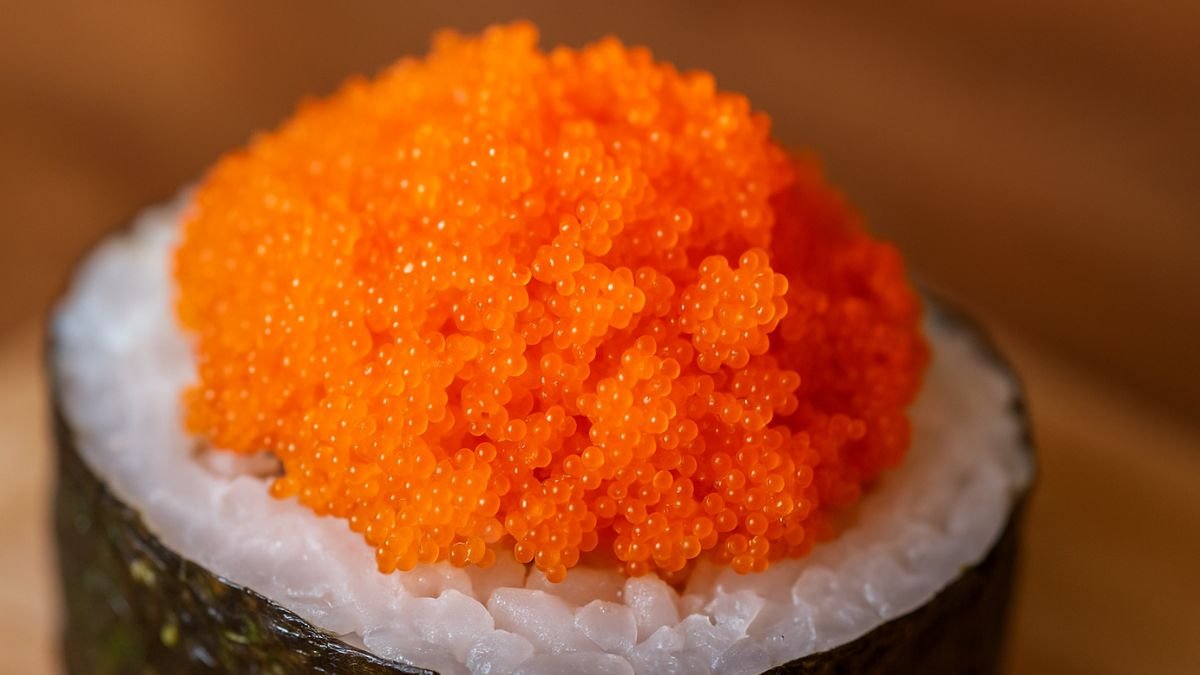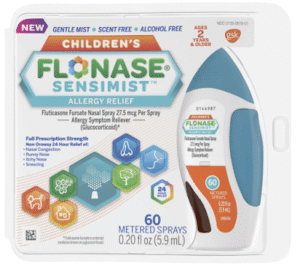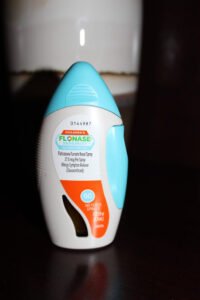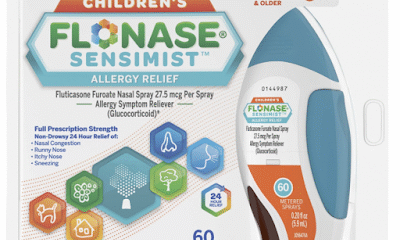HEALTH
Masago: The Tiny Sushi Topping with Big Health Benefits

If you’ve ever admired the orange shimmer on your sushi roll, chances are you’ve met masago. These tiny, crunchy fish eggs not only add flavor and texture but also bring a nutritional punch that many people overlook. But what exactly is Capelin roe, and is it good for your health? Let’s dive into the fascinating world of this popular sushi ingredient.
What is Masago?
Masago is a type of fish roe, specifically harvested from capelin—a small forage fish found in the icy waters of the North Atlantic and Arctic Oceans. These fish are a close relative of smelt and are sustainably caught in countries like Iceland, Norway, and Canada.
The roe is tiny, round, and naturally pale yellow. However, what you usually see on sushi is bright orange, red, green, or black—thanks to added colorants like squid ink, wasabi, and yuzu for visual appeal and flavor variety.
It’s often confused with tobiko (flying fish roe), but Capelin roe is generally smaller, less crunchy, and more affordable—making it a favorite among sushi chefs and seafood lovers alike.
Masago vs Tobiko vs Ikura vs Caviar
While all of these are technically fish roe, they vary significantly in texture, color, and origin.
-
Tobiko comes from flying fish and is larger and more crunchy than Capelin roe.
-
Ikura is salmon roe—big, juicy, and very rich.
-
Caviar, on the other hand, is usually sturgeon roe and known for its luxurious texture and price.
Masago, being the smallest and mildest, is a cost-effective way to enjoy the umami of fish roe without breaking the bank.
| Feature | Masago | Tobiko | Ikura | Caviar |
|---|---|---|---|---|
| Source | Capelin | Flying Fish | Salmon | Sturgeon |
| Size | Very small | Small | Large | Varies |
| Color | Dyed orange, red, green | Bright red/orange | Orange | Black/gray |
| Texture | Soft crunch | Firm crunch | Juicy | Smooth |
| Price | Affordable | Moderate | Expensive | Luxury |
How is Masago Harvested and Prepared?
The process starts with female capelin fish, which are collected during spawning season when their roe is most abundant. The eggs are extracted, cleaned, lightly salted, and then often flavored or colored. You might find wasabi Capelin roe (green and spicy), squid ink masago (black and earthy), or even yuzu-flavored versions.
Capelin roe is typically sold frozen or refrigerated and is available at most Asian grocery stores and online seafood retailers.
Masago Nutrition: Is It Good for You?
Absolutely. One tablespoon (approx. 16 grams) of masago contains:
-
Calories: ~40
-
Protein: 4 grams
-
Fat: 2.5 grams (mostly healthy fats)
-
Omega-3 fatty acids: Rich source
-
Vitamin B12: Over 50% of your daily needs
-
Selenium & Vitamin D: Important for immunity and bone health
Thanks to its high levels of vitamin B12 and omega-3s, Capelin roe supports brain function, cardiovascular health, and even energy metabolism.
Health Benefits of Masago
-
Brain Health: Omega-3s like EPA and DHA found in fish roe support cognitive function and memory.
-
Heart Protection: These fatty acids also reduce inflammation and lower blood pressure.
-
Immune Support: Selenium and B12 boost your immunity and energy levels.
-
Low-Calorie Protein: Masago is a high-protein, low-carb food ideal for those watching calories.
That said, masago is also high in sodium, which could be a concern for people with hypertension.
Is Masago Safe to Eat?
For most people, yes—Capelin roe is perfectly safe in moderation. However, there are a few things to keep in mind:
-
Seafood Allergies: Anyone allergic to fish or shellfish should avoid Capelin roe.
-
Sodium Content: One tablespoon contains over 200 mg of sodium.
-
Pregnancy: Though it contains less mercury than large fish, pregnant women should consult a doctor before consuming raw seafood.
People Also Ask:
-
Is masago raw or cooked?
Masago is usually served raw, especially in sushi, but it is often cured and slightly salted. -
Can you eat masago by itself?
Yes, but it’s commonly used as a garnish or ingredient due to its strong salty taste.
Ways to Use Masago in Food
You’ve likely seen it sprinkled on sushi, but masago’s culinary potential goes beyond rolls:
-
Sushi Rolls: California rolls, spicy tuna rolls, and masago nigiri
-
Poke Bowls & Salads: Adds a salty, crunchy kick
-
Ramen & Rice Dishes: A fancy finishing touch
-
Masago Mayo or Dips: Mixed with Japanese mayo for spreads
You can also use Capelin roe to make sauces, garnish deviled eggs, or even top off avocado toast for a unique twist.
Storage Tips and Shelf Life
Capelin roe should be refrigerated and consumed within 3–4 days of opening. If unopened and frozen, it can last 3–6 months. Always keep it sealed tightly, and avoid refreezing.
Signs that Capelin roe has gone bad include an off smell, discoloration, or slimy texture.
Where to Buy Masago
Capelin roe is widely available in:
-
Asian supermarkets (like H Mart, Mitsuwa, etc.)
-
Online seafood shops (frozen, flavored, or bulk)
-
Some high-end grocery stores with sushi sections
Prices range from $10–$30 per 100g, depending on flavor and freshness.
Final Thoughts: Should You Add Masago to Your Diet?
Capelin roe is a tiny powerhouse—rich in nutrients, versatile in the kitchen, and undeniably eye-catching. While it’s not something to eat in bulk due to its sodium content, it can be an excellent addition to your diet in moderation. Whether you’re a sushi lover or just exploring Japanese cuisine, Capelin roe offers taste, texture, and health benefits in one bite-sized package.
CLICK HERE FOR MORE BLOG POSTS
FAQ Recap
-
What is masago made from?
Capelin fish eggs, usually salted and dyed. -
Is masago the same as tobiko?
No, tobiko is from flying fish, and it’s larger and crunchier. -
Is masago safe during pregnancy?
It contains less mercury but should be consumed cautiously and only if pasteurized. -
Why is masago dyed different colors?
For flavor and aesthetics—squid ink (black), wasabi (green), etc. -
How long does masago last in the fridge?
3–4 days once opened; up to 6 months frozen.
HEALTH
Turkey Neck Fixes That Don’t Need Surgery

Introduction: Why Everyone’s Talking About Turkey Neck
Whether you’re in your 30s noticing early signs of sagging, or in your 60s trying to reverse a prominent turkey neck — you’re not alone. Millions search questions like “why do I suddenly have a turkey neck?” or “how to get rid of turkey neck without surgery.” This article gives expert-level, human-like answers to every real query, from cosmetic solutions to cooking giblets. Let’s get right into it.
What Is a Turkey Neck?
A turkey neck refers to the loose, wrinkled, or sagging skin under your chin — caused by a combination of aging, collagen loss, fat deposits, and weak neck muscles (particularly the platysma). It’s a totally normal but frustrating part of aging.
Visualizing the Reality of a Turkey Neck — Where Anatomy Meets Aging
The physical changes behind a turkey neck, including the weakening of the platysma muscle, which plays a critical role in neck contour. As we age, collagen breakdown accelerates, contributing to sagging skin and the unmistakable signs of an aging neck. The image also hints at the culinary side of the term, reflecting how one phrase can carry both aesthetic and traditional meaning.
Why Do I Suddenly Have a Turkey Neck?
It often feels sudden because it crosses a visual tipping point:
- Collagen drops rapidly after age 35
- Weight gain/loss stretches skin
- Posture problems and screen time (“tech neck”) worsen sagging
- Sun exposure breaks down skin elasticity
Will Losing Weight Help Turkey Neck?
Yes — if your skin has elasticity. But for most people over 40, fat goes but skin stays, which makes sagging more visible. That’s why tightening treatments often matter more than fat loss.
Best Non-Surgical Treatments (That Actually Work)
1. Ultherapy – High-intensity ultrasound lifts skin by rebuilding collagen. Results appear in 2–3 months.
2. RF Microneedling – Boosts collagen + tightens skin with heat and tiny needles.
3. Thread Lift (PDO or Silhouette Soft) – Lifts sagging skin instantly with dissolvable threads.
4. Botox (Nefertiti Lift) – Relaxes platysma muscles to smooth vertical bands.
5. Kybella Injections – Dissolves chin fat; useful when fat causes the sag.
Exercises, Creams & Home Remedies
- Facial Yoga: “Kiss the Ceiling” and “Chin Tucks” daily
- Topical Creams: Peptides, Retinol, Vitamin C, and SPF
- Massage & Posture: Improves circulation and tension in platysma
Surgical Options for Long-Term Fix
A. Neck Lift (Platysmaplasty)
- Tightens both skin and muscles
- 10–15 years of results
B. Liposuction / Facelift Combo
- Removes fat and tightens skin simultaneously
- Ideal if sagging + fat both present
What to Do With Turkey Neck (In The Kitchen)
Turkey neck isn’t just a cosmetic concern — it’s also a kitchen staple.
Try These:
- Turkey Neck Stew
- Slow-Cooked Turkey Neck with Greens
- Smoked Turkey Neck in Gravy
- Jamaican Turkey Neck Curry
Cooking Queries About Turkey Neck — Answer Table
| User Query | About | Expert Answer (Short) | Use Case |
|---|---|---|---|
| how to cook turkey neck and giblets | Basic prep for stock/soup | Simmer with onion, garlic, celery for 1.5–2 hrs. Use broth in stuffing or soup. | Thanksgiving, meal prep |
| turkey neck recipe | Simple meat dish | Season + sear necks → simmer with onions & broth until tender. | Serve with rice or mash |
| smoked turkey neck | Pre-smoked, rich flavor | Add to greens, beans, or stews. Simmer to release smoky flavor. | Southern cooking, side dishes |
| turkey neck for dogs | Natural dog treat | Give raw (clean source) or boiled unseasoned. Remove bones before serving if cooked. | Natural calcium, dental support |
| turkey neck soup recipe | Collagen-rich soup | Boil with carrots, celery, herbs; shred meat back into broth. | Hearty soups, winter meals |
| gravy with turkey neck | Homemade gravy | Simmer neck → make roux → add strained broth → mix shredded meat. | Pour over turkey, mashed potatoes |
Visual + Pop Culture
- turkey neck meme: Internet jokes often exaggerate the look
- turkey neck images/photos/pics: Common before/after references
- turkey neck penis: A slang term, unrelated medically
Final Advice
Whether you’re searching, “How do I fix my turkey neck without surgery?” or asking, “What to do with turkey neck and giblets?” — this guide covers it all. From proven anti-aging treatments to timeless kitchen recipes, everything here is crafted to answer real questions with clarity, depth, and authority. You’re not just reading a blog — you’re reading the internet’s most complete, human-centered resource on turkey neck.
HEALTH
Gummy Bear Implants: The Secret to Natural, Long-Lasting Curves

Gummy bear implants are becoming the gold standard in modern breast augmentation due to their natural feel, shape retention, and long-term safety. If you’re considering breast enhancement, understanding the details of gummy bear breast implants—including cost, comparison, benefits, and before-and-after expectations—is essential for making an informed decision.
What Are Gummy Bear Implants?
Often referred to as gummy bear breast implants, these are form-stable implants filled with a cohesive silicone gel that holds its shape even if the shell breaks. So, what is a gummy bear implant? Simply put, it’s a breast implant that mimics the consistency of a gummy bear candy—firm yet flexible, retaining its teardrop shape over time.
Gummy Bear Implants Before and After
One of the biggest draws of gummy bear implants before after procedures is the incredibly natural result. Gummy bear breast implants before and after photos often reveal a more youthful and fuller profile with minimal scarring and ideal anatomical placement. Whether you’re opting for high profile gummy bear implants or a subtler enhancement, results usually appear soft and well-contoured.
READ ASLO: Masago: The Tiny Sushi Topping with Big Health Benefits
Gummy Bear Implants vs Regular Implants
In the comparison of gummy bear implants vs regular silicone or saline options:
| Feature | Gummy Bear Implants | Regular Silicone/Saline |
|---|---|---|
| Shape Retention | Excellent (Teardrop) | Moderate (Round or Teardrop) |
| Risk of Leakage | Minimal (form-stable gel) | Higher |
| Natural Feel | High | High (Silicone), Low (Saline) |
| Cost | Higher | Lower |
| Longevity | 15–20 years | 10–15 years |
So when it comes to gummy bear implants vs silicone, the key difference lies in structure, firmness, and rupture resistance.
Gummy Bear Implants Cost & Price Insights
Wondering about the gummy bear implants price? On average, gummy bear implants cost ranges from $6,000 to $12,000, depending on the clinic, surgeon’s expertise, and geographic location. Always ask for full breakdowns, including surgical, anesthesia, and facility fees.
If you’re searching for gummy bear implants near me, remember that location affects cost dramatically—implants in Beverly Hills will cost more than in Austin or Houston.
Gummy Bear Implant Problems: What to Know
Despite their popularity, there are some gummy bear implant problems to be aware of:
-
Capsular contracture (hardening of scar tissue)
-
Rotation of teardrop implants, leading to uneven appearance
-
Textured shell recall risks (some types were recalled for health concerns)
-
Difficulty detecting ruptures without MRI (even though rare)
That said, the risk is lower compared to older silicone models or saline versions.
Gummy Bear Implants Pros and Cons
Here’s a quick breakdown of gummy bear implants pros and cons:
Pros:
-
Natural teardrop shape
-
Low leakage rate
-
Long-lasting (15+ years)
-
Feels soft yet firm
-
Less wrinkling
Cons:
-
Higher cost
-
May require a larger incision
-
MRI needed for rupture detection
-
Rotational risk in teardrop models
These pros and cons are crucial when deciding between gummy bear implants vs silicone implants or other options.
Gummy Bear Implant Types and Variations
-
Gummy bear teardrop implants: Anatomical shape for natural contour
-
High profile gummy bear implants: Provide more projection, ideal for petite frames
-
Gummy bear silicone implants before and after: Visibly firm, well-positioned, and subtle
If you’re planning a consultation, you might ask for a gummy bear breast implant sizers kit to preview different volumes and projections on your body frame.
Silicone vs Gummy Bear Implants: Final Verdict
Silicone vs gummy bear implants is a hot debate in cosmetic surgery forums. While both are silicone-based, gummy bear breast implants vs silicone shows the former is superior in shape retention and longevity. Traditional silicone implants feel slightly more fluid, while gummy bears stay cohesive and firm.
HEALTH
Children’s Flonase Sensimist Allergy Relief: Review

My daughter is 4 and struggles with seasonal allergies. They always start around Fall and Spring. She gets red puffy eyes, a runny & stuffy nose, and develops a cough. She suffers from just about every kind of allergy symptom. Her nose issues, however, have got to be the one thing th
at is always the worst out of her symptoms.

Thanks to BzzAgent, the Children’s Flonase Sensimist Allergy Relief has been a huge help throughout the last few weeks. With Spring almost here, my little girl’s allergies have been crazy. She can’t breathe at night with her stuffy nose, which also is runny pretty much 24/7. The Flonase Sensimist, unlike other nasal sprays, is a light mist, not a full-on spray. Within a few days of using this product my little girls allergy issues have started to dissipate.
The bottle design and location of the button make it easy to hold and use at the same time. There is a nice little window to see how much Flonase is left. I now have one very happy little girl with a very happy nose.

Kids can enjoy more complete,* 24-hour non-drowsy allergy symptom relief with Children’s Flonase Sensimist Allergy Relief. It delivers a gentle mist so fine, your child might not even feel it. Unlike syrups and tablets, Children’s Flonase Sensimist is indicated to relieve nasal congestion.* It also relieves itchy, watery eyes** commonly caused by pollen, mold, dust and pet dander. It is scent-free, alcohol-free and is virtually drip-free. And because of its gentle mist, Children’s Flonase Sensimist is kid-friendly for children ages 2 and up. *vs. Single-ingredient antihistamines which do not treat nasal congestion. **Children’s Flonase Sensimist is indicated for itchy, watery eyes in adults and children 12 years of age and older.

Where to purchase: You can go to the “Where to Buy” tab on the Flonase website, to find a retailer near you and online to make a purchase. You can also make a purchase on Amazon for $11.89
You can follow Flonase on
Disclosure: I was compensated for this post from either a company or PR team. Regardless, I only recommend products or services I use or would use personally and believe will be good for my readers. Your opinions may vary from my opinions. Links in the post above my contain affiliate links. You can also go here and read my PR and Disclosure Polices.
-

 TECHNOLOGY3 months ago
TECHNOLOGY3 months agoHow to Build a Mobile App with Garage2Global: From Idea to Launch in 2025
-

 HEALTH4 months ago
HEALTH4 months agoChildren’s Flonase Sensimist Allergy Relief: Review
-

 BLOG3 months ago
BLOG3 months agoKeyword Optimization by Garage2Global — The Ultimate 2025 Guide
-

 BLOG3 months ago
BLOG3 months agoSEO for Business Growth from Garage2Global — The 2025 Advantage
-

 TECHNOLOGY3 months ago
TECHNOLOGY3 months agoAVtub: The Rise of Avatar-Driven Content in the Digital Age
-

 BLOG4 months ago
BLOG4 months agoWarmables Keep Your Lunch Warm ~ Lunch Box Kit Review {Back To School Guide}
-

 EDUCATION4 months ago
EDUCATION4 months agoHCOOCH CH2 H2O: Structure, Properties, Applications, and Safety of Hydroxyethyl Formate
-

 BLOG4 months ago
BLOG4 months agoSankkuComplex: Top Shopping & Food Spot In Tampines
